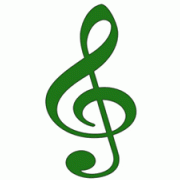-
Posts
142 -
Joined
-
Last visited
-
Days Won
6
jejrekmek last won the day on December 24 2022
jejrekmek had the most liked content!
About jejrekmek

- Birthday 01/17/2008
Profile Information
-
Biography
un baiser est le début du cannibalisme
-
Gender
NA
-
Location
USA
-
Occupation
highschool
-
Favorite Composers
right now: Ravel, Debussy, Scriabin, Messiaen, Takemitsu, Chopin, Beethoven
-
Notation Software/Sequencers
musescore 4!!!!
-
Instruments Played
Piano, and guitar but not in the classical sense just casually
Recent Profile Visitors
2,303 profile views
jejrekmek's Achievements
-
there’s more where this came from
-
jejrekmek started following ComposaBoi
-
Aw Ke Shen started following jejrekmek
-

white phosphorus (prelude/vignette)
jejrekmek replied to jejrekmek's topic in Piano Music, Solo Keyboard
all I know about axis theory is that it has to do with transposing chords across minor thirds, which is something I do. tbh I mostly wrote the harmony on intuition. I can give some random thoughts the opening chords are built on two sets of minor sixths, the left hand moving up a minor third and the right hand moving down a semitone. I view m. 10 and m. 45-48 as extended V-I's (Db to Gb). the extensions leave us only a glimpse of the dominant-tonic relationship, which gives the sense of a lost innocence or something of that nature as for the the messiaen-like section at m. 22, it's grounded in pedal points cycling in major thirds (E, C, Ab). The section concludes with the Ab pedal tone, which acts as a iv chord to Eb minor. (and in modulating to Eb minor, the right hand plays B-D#-A#, and then plays D-F#-C#, so there's more of those minor-third shenanigans). The "bell" chords in the high registers of the piano have a few recurring elements. oftentimes there is a chord in the left hand which is played simultanenously an octave or two up, only moved down a semitone, creating a major-seventh dissonance in every single note. (example: m. 22, Eb minor over E minor). I often use Minor-major seven chords, augmented major seven chords, minor major sevens with a raised fifth, and minor major sevenths with a flat fifth. so in m.33-34, I constructed the chords as a G# minor-maj7 sharp 5 with an Eb melody on top; G minor-major7 sharp 5 with a Db melody on top; and B minor-maj7 sharp 5 with an F# beneath, respectively. you may also notice a couple occurrences of chords with a two major thirds separated by a major-seventh interval. (example: m. 54, C E B D#). another note on m. 53-54. I constructed this as another one of those "uncanny-valley" V-I's, being G to C. The G chord is: G, F, Bb, Eb, Ab, and the C is the aforementioned: C, E, B, D#. However these two chords are interrupted by another chord: Bb, Gb, D, F. so calling it a V-I is an even bigger stretch. however that intercepting chord was constructed as being a Gb augmented major-seventh chord, which is a tritone away from C, so I guess there's more of that axis-theory stuff. the ending sets up a V-I to Eb minor: Bb, D, Ab, C#. and then B, D, Ab, Bb, which I saw as a Bb dominant chord with a b natural in the base. Then the base jumps down F, and the D, Ab, and Bb are repurposed as the natural sixth, minor third, and fourth of an F minor chord, which "resolves" to the final extended C minor chord. there's also a few sus shapes in this piece. I'm particularly a fan of this, i guess it's a major-add4 chord in second inversion. for example, in m. 38 on the third beat, the right hand plays a sus 2 shape: Eb, F, Bb, while a D plays in the base, creating this particular chord. I also realized there's a type in m. 31 on the second beat, the left hand says E and G when it should be C and E. -
@Ivan1791's habit of writing "dark preludes" kind of inspired me. also toru takemitsu
-
my name is skyler white yo. my husband is walter white, yo. very sweet melody :'3 that texture/rhythm at 0:38 is unexpected and cool
-
according to the "works with few reviews" section this post has negative 1 replies so thats pretty cool congrats on that
-
it’s melodica not accordion lole
-

Poéme for piano (scriabinesque style)
jejrekmek replied to Nazariy's topic in Piano Music, Solo Keyboard
cool harmonies and development! I love the climax the opening sounds like the opening to scriabin’s sonata 10 -
jejrekmek changed their profile photo
-
Ive been inspired by phil elverum’s music especially the glow, part 2. anyways I have a new piano piece and will post that once I refine the score.
-

Favourite Romance(s)?
jejrekmek replied to expert21's topic in Music Appreciation: Suggest Works or Articles
Takemitsu just in general has written some of the darkest pieces i've ever heard -

Distorted Thought (Atonal horror piece)
jejrekmek replied to Ivan1791old's topic in Piano Music, Solo Keyboard
THIS IS AWESOME!! I love free atonalilty so much also the freeze frame from Begotten at the end of the vid was a nice touch -
whiskers and fangs, I'll dig into you I don't feel sad unless you are too fur in my teeth, I'll make us rat stew you'll stoke the fire while i'm drifting through.... whiskers and fangs, my gums show Wish i could purr so that you could know just how safe you make me feel just how you make the world seem real whiskers & fangz, paws and tail curled on your lap, the stars are pale The moon is full, and it makes me sick might have to drink your blood real quick, cause it makes me better, I'm sure you can tell As long as it's from you it makes me well Wish i could spend 8 more lives with you wish there was more for us to both do claws and teeth are sounding alarms I've got my eye on your bruised arm my tail twitches when i'm alone all I want's for you..............to come home so come home I don't feel human, I don't feel right I just feel like spending the night with you, your shape by my side, your sweat on my hands, your voice in the night Whiskers and tail, whiskers & fangs Snowy cat ,I'll remember your name whiskers and tails, whiskers and fangs whiskers and you............
-
aw these sorts of posts are so nice, and thank you sm, I wish I wasnt such a lurker/lazyposter everyone seemed to really like that snowfall piece I wrote, I actually repurposed it as a “song” as well, with what you could call a field recording of my family during a christmas party distorted in the background, I think it adds even more strange feelings to the piece, maybe i’ll post it as well/edit the post to include it?!
-
jejrekmek started following Thatguy v2.0
-
new piano piece, also with the score for once- pretty bad performance, if someone wants to play this feel free. also let me know if any images come to mind when you hear this, I titled it reverie just cause I needed a title, but I didn't actually have anything in mind when writing this. enjoy ^_^




.thumb.png.8b5b433a341551e913a34392660bc95b.png)


.thumb.png.1e2763f479362bbb522da50d31ef2e50.png)








